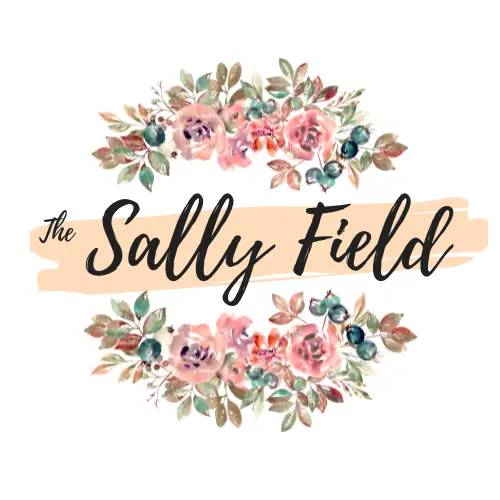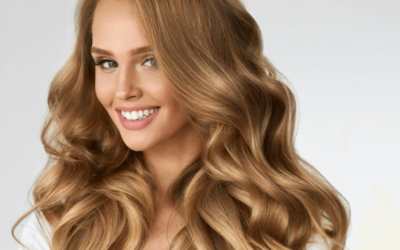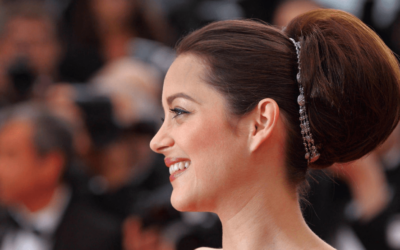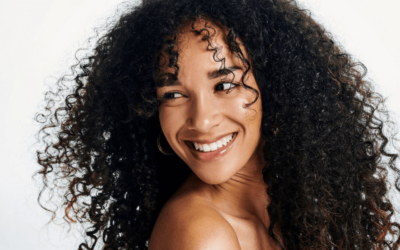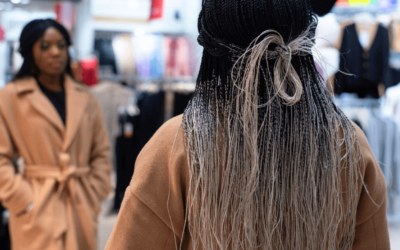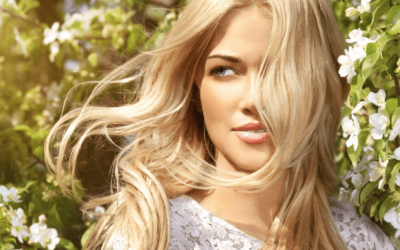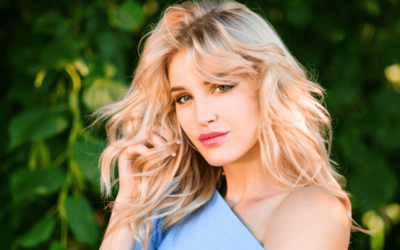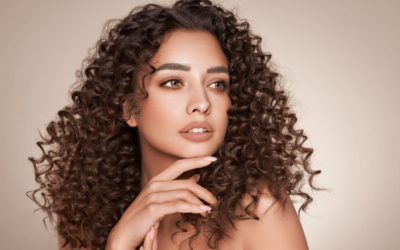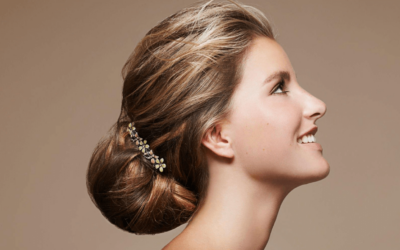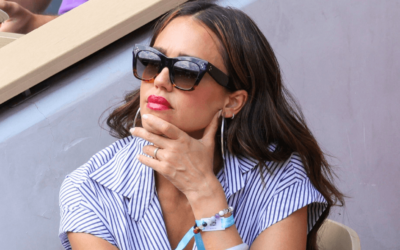Hair is a defining feature that varies greatly from person to person, showcasing the beauty and diversity of humanity. From straight and silky to curly and coiled, there are numerous types of hair that deserve recognition and celebration.
In this comprehensive guide, we will explore the different types of hair, understand their unique characteristics, and provide tips for caring for and styling each type.
Whether you have straight, wavy, curly, or kinky hair, this article will help you embrace and love your natural hair texture. Let’s dive in!
Understanding Hair Types
Straight Hair
Straight hair is characterized by its smooth, sleek appearance. The hair shafts are typically round and lie flat, reflecting light and giving the hair a shiny and lustrous look.
People with straight hair often find it easy to manage and style due to its low level of natural texture. Straight hair tends to be more prone to oiliness, as the natural oils from the scalp can easily travel down the hair shaft.
Straight hair can be further categorized into three subtypes:
Type 1A: Fine and thin straight hair that lacks volume.
Type 1B: Medium-textured straight hair that has more body and volume.
Type 1C: Coarse and thick straight hair with added volume and resilience.
Tips for Straight Hair Care:
Use lightweight, volumizing shampoos and conditioners to add body to fine hair. Avoid heavy, oil-based products that can weigh down straight hair.
Protect straight hair from heat damage by using a heat protectant before styling with hot tools. To learn more about straight hair care and styling, check out our comprehensive guide on Straight Hair Care and Styling Tips.
Wavy Hair
Wavy hair falls between straight and curly hair, with natural waves that create a beautiful texture. Wavy hair is characterized by its “S” or “C” shaped patterns that vary in intensity.
It tends to have more body and volume than straight hair, but less curl definition than curly hair. Wavy hair can range from loose waves to more defined and structured curls.
Wavy hair can be further categorized into three subtypes:
Type 2A: Loose, beachy waves that are easy to manage and style.
Type 2B: Moderately defined waves that have more texture and volume.
Type 2C: More pronounced waves that border on loose curls, with increased volume and thickness.
Tips for Wavy Hair Care:
Use moisturizing shampoos and conditioners to enhance the natural texture of wavy hair. Apply a leave-in conditioner or curl-enhancing cream to define and tame the waves.
Scrunch the hair while drying to encourage wave formation and enhance volume. To learn more about wavy hair care and styling, check out our comprehensive guide on Wavy Hair Care and Styling Tips.
Curly Hair
Curly hair is known for its beautiful ringlets and spirals, showcasing a wide range of textures and curl patterns. Curly hair can be fine, medium, or coarse and is characterized by its natural elasticity.
It tends to be drier and more prone to frizz due to the shape of the hair follicles, which makes it challenging to retain moisture.
Curly hair can be further categorized into three subtypes:
Type 3A: Loose, well-defined curls that are springy and voluminous.
Type 3B: Medium-sized curls that have more density and thickness.
Type 3C: Tighter, corkscrew-like curls that are densely packed and prone to shrinkage.
Tips for Curly Hair Care:
Use sulfate-free shampoos and deep conditioners to retain moisture in curly hair. Apply a leave-in conditioner or curl cream to define and enhance the curls.
Avoid brushing curly hair when dry to prevent frizz and disrupt the curl pattern. To learn more about curly hair care and styling, check out our comprehensive guide on Curly Hair Care and Styling Tips.
Kinky Hair
Kinky hair, also known as coily or Afro-textured hair, is characterized by tight, densely packed curls or coils. It has a high level of natural texture and requires extra care to maintain moisture and prevent breakage.
Kinky hair is highly versatile and can be styled in a variety of ways, from afros to twist-outs and braid-outs.
Kinky hair can be further categorized into three subtypes:
Type 4A: Defined, S-shaped coils that have more spring and elasticity.
Type 4B: Tighter, Z-shaped coils that form a zigzag pattern.
Type 4C: More densely packed coils that have a tighter curl pattern and significant shrinkage.
Tips for Kinky Hair Care:
Use moisturizing shampoos and deep conditioners to keep kinky hair hydrated. Apply a rich, leave-in conditioner or butter-based moisturizer to seal in moisture.
Practice low-manipulation styling techniques to minimize breakage and retain length. To learn more about kinky hair care and styling, check out our comprehensive guide on Kinky Hair Care and Styling Tips.
Caring for Different Hair Types
Washing and Conditioning
Regardless of your hair type, maintaining a proper washing and conditioning routine is essential for healthy hair. However, the frequency of washing can vary depending on your hair’s needs and characteristics.
Straight Hair: Generally, straight hair tends to get oilier faster, so it may require more frequent washing, typically every other day or every two days.
Wavy Hair: Wavy hair is more prone to dryness, so washing every two to three days or even less frequently can help retain natural oils and moisture.
Curly Hair: Curly hair is prone to dryness and can benefit from less frequent washing, usually every three to four days or as needed.
Kinky Hair: Kinky hair has a natural tendency to be dry, so washing once a week or every ten days can help preserve moisture.
When washing, choose a shampoo specifically formulated for your hair type, focusing on the scalp to remove dirt and excess oils.
Follow up with a conditioner that matches your hair’s needs, applying it primarily to the mid-lengths and ends to nourish and moisturize.
Moisturizing and Hydrating
Proper hydration is crucial for maintaining healthy and manageable hair, regardless of its type. However, different hair types have varying levels of moisture retention.
Straight Hair: Straight hair tends to be naturally well-lubricated due to the ease with which oils can travel down the hair shaft. However, it still requires lightweight moisturizers to prevent dryness and maintain shine.
Wavy Hair: Wavy hair benefits from moisturizers that provide hydration without weighing down the hair. Look for products that contain humectants like glycerin or aloe vera, which attract moisture from the environment.
Curly Hair: Curly hair requires more moisture due to its naturally drier nature. Look for rich, creamy moisturizers and products containing natural oils like argan oil or shea butter to lock in moisture and prevent frizz.
Kinky Hair: Kinky hair thrives on intense moisture and hydration. Use moisturizers that are thick and butter-based, such as shea butter or avocado oil, to provide long-lasting moisture and nourishment.
It’s important to note that everyone’s hair is unique, so experimentation may be necessary to find the perfect balance of moisture for your specific hair type.
Detangling and Brushing
Proper detangling and brushing techniques are essential to prevent breakage and minimize hair damage. Here are some tips for different hair types:
Straight Hair: Straight hair is generally easier to detangle and can benefit from gentle brushing with a wide-toothed comb or paddle brush.
Start from the ends and work your way up to avoid tugging or causing unnecessary tension.
Wavy Hair: Wavy hair is prone to tangling, so use a wide-toothed comb or a detangling brush to remove knots and tangles gently. Begin detangling from the bottom, working your way up.
Curly Hair: Curly hair is prone to frizz and breakage, so it’s best to detangle it when wet and saturated with conditioner. Use your fingers or a wide-toothed comb, starting from the ends and working your way up to minimize damage.
Kinky Hair: Kinky hair requires careful and patient detangling. Divide the hair into sections and use your fingers or a wide-toothed comb, starting from the ends and gradually moving upward.
Apply a generous amount of conditioner or a detangling spray to ease the process. Remember to be gentle and avoid forcefully pulling or combing through knots, as this can lead to breakage and damage.
Heat Styling and Protection
Heat styling tools can transform your hair into various styles, but excessive heat can cause damage and weaken the hair strands. Here are some tips to protect your hair when using heat:
Straight Hair: Straight hair is more tolerant of heat, but it’s still essential to use heat protectant sprays or serums before styling. Keep the heat setting moderate and avoid excessive heat exposure.
Wavy Hair: Wavy hair benefits from air-drying or using heat-free styling techniques whenever possible.
If you choose to use heat, apply a heat protectant and use a diffuser attachment on your blow dryer to minimize damage and preserve the natural texture.
Curly Hair: Curly hair is prone to heat damage, so it’s best to limit heat styling and embrace natural styles. If heat styling is necessary, apply a heat protectant and use a diffuser or a wide-toothed comb attachment to distribute heat evenly.
Kinky Hair: Kinky hair is more susceptible to heat damage, so it’s advisable to minimize heat usage and focus on heat-free styling methods like twists, braids, or bantu knots.
If using heat, always apply a heat protectant and use the lowest heat setting possible. Remember to give your hair regular breaks from heat styling to promote overall hair health.
Styling Tips for Different Hair Types
Straight Hair Styles
Sleek and Straight: Use a flat iron to achieve a sleek, straight look. Apply a heat protectant and divide your hair into sections for easier styling.
Voluminous Blowout: Use a round brush and a blow dryer to create volume and movement in straight hair. Start at the roots and lift the hair while directing the airflow downward.
Beachy Waves: Use a curling wand or a flat iron to create loose waves in straight hair. Alternate the direction of the curls for a natural, beachy look.
Wavy Hair Styles
Effortless Waves: Apply a texturizing spray or sea salt spray to enhance the natural waves. Scrunch the hair while it air dries or use a diffuser attachment on a low heat setting.
Half-Up Half-Down: Gather the top half of your hair and secure it with a hair tie or clip, leaving the rest of the waves to flow freely.
Braided Styles: Create braids, such as a side braid or fishtail braid, to add interest and texture to your wavy hair.
Curly Hair Styles
Defined Curls: Apply a curl-enhancing cream or gel to wet hair and scrunch the hair gently. Allow it to air dry or use a diffuser attachment for more defined curls.
Pineapple Updo: Gather all your curls on top of your head and secure them loosely with a scrunchie or hair tie. This helps to preserve the curl pattern while you sleep or refresh your curls.
Twist-Out or Braid-Out: Section your damp hair and twist or braid each section. Allow the hair to dry completely, then unravel the twists or braids for beautifully defined curls.
Kinky Hair Styles
Afro: Embrace your natural texture by styling your hair into a full afro. Use a pick or your fingers to fluff and shape the hair for desired volume.
Two-Strand Twists: Divide your damp hair into sections and twist each section with two strands. Allow the twists to dry completely, then unravel them for gorgeous twist-out curls.
Protective Styles: Opt for protective styles like braids, twists, or locs to protect your kinky hair and promote hair growth.
Experiment with different styles and techniques to find what works best for your hair type and personal preference. Don’t be afraid to get creative and embrace the unique beauty of your natural hair!
Embracing Your Natural Hair Texture
Building Confidence
Embracing your natural hair texture is a journey that requires self-love and confidence. Here are some tips to help you build confidence in your natural hair:
Positive Affirmations: Practice positive self-talk and affirmations about your hair. Remind yourself of its uniqueness and beauty.
Surround Yourself with Support: Connect with a community of people who embrace their natural hair. Seek support from friends, family, or online communities that promote self-acceptance.
Self-Care Rituals: Create a self-care routine that includes caring for your hair. Take the time to pamper yourself and nourish your hair with love and attention.
Overcoming Hair Stereotypes
Society often perpetuates hair stereotypes that can lead to misconceptions and biases. Overcome these stereotypes by:
Educating Yourself: Learn about the diverse range of hair textures and challenge the stereotypes associated with them.
Sharing Knowledge: Share your hair journey and educate others about the beauty and versatility of all hair types.
Advocacy: Support organizations and initiatives that promote inclusivity and challenge discriminatory hair policies or practices.
Representation and Diversity
Representation matters, and it’s important to advocate for diversity in the media and beauty industry. Demand inclusive representation by:
Supporting Brands: Purchase products from brands that celebrate and represent diverse hair textures.
Social Media Influence: Follow and engage with content creators who embrace and showcase diverse hair textures.
Voice Your Opinion: Engage in discussions and provide feedback to brands and media outlets, urging them to prioritize diversity and representation.
Self-Care and Acceptance
Taking care of your natural hair is an act of self-care and self-acceptance. Embrace your hair journey by:
Establishing a Routine: Create a hair care routine that aligns with your hair’s needs and fits into your lifestyle.
Patience and Consistency: Be patient with your hair as it grows and adapts to your care routine. Consistency is key to achieving healthy and beautiful hair.
Celebrate Progress: Acknowledge and celebrate the progress you’ve made in accepting and caring for your natural hair. Remember, your natural hair is unique and beautiful, and it deserves to be celebrated and cherished.
Popular Hair Care Products for All Hair Types
Shampoos and Conditioners
OrganicVerve Hydrating Shampoo – A moisturizing shampoo suitable for all hair types, enriched with natural ingredients to cleanse and hydrate the hair.
Curls & Co. Repairing Conditioner – A nourishing conditioner that helps repair and strengthen damaged hair, leaving it soft and manageable.
Leave-In Conditioners and Moisturizers
Shea Moisture Jamaican Black Castor Oil Leave-In Conditioner – A leave-in conditioner that promotes hair growth and provides moisture and shine.
Cantu Shea Butter Daily Oil Moisturizer – A lightweight oil moisturizer that nourishes and hydrates all hair types without weighing them down.
Styling Gels and Creams
Eco Styler Professional Styling Gel – A versatile styling gel suitable for all hair types, offering maximum hold and definition.
Miss Jessie’s Pillow Soft Curls – A lightweight styling cream that enhances curls and reduces frizz, providing soft and touchable results.
Heat Protectants and Serums
Tresemme Thermal Creations Heat Tamer Spray – A heat protectant spray that guards against heat damage and adds shine to the hair.
Moroccanoil Treatment – A versatile hair serum infused with argan oil, providing nourishment, shine, and heat protection.
Conclusion
Every hair type is unique and beautiful in its own way, showcasing the diversity that makes us who we are. By understanding and embracing the characteristics of different hair types, we can learn to care for and style our hair effectively.
Whether you have straight, wavy, curly, or kinky hair, the key lies in maintaining a proper hair care routine, using suitable products, and celebrating your natural hair texture.
Embrace your hair journey, experiment with different styles, and let your hair reflect your individuality and confidence. Remember, all hair types are beautiful, and it’s time to celebrate the diversity of “All Types of Hair”!
